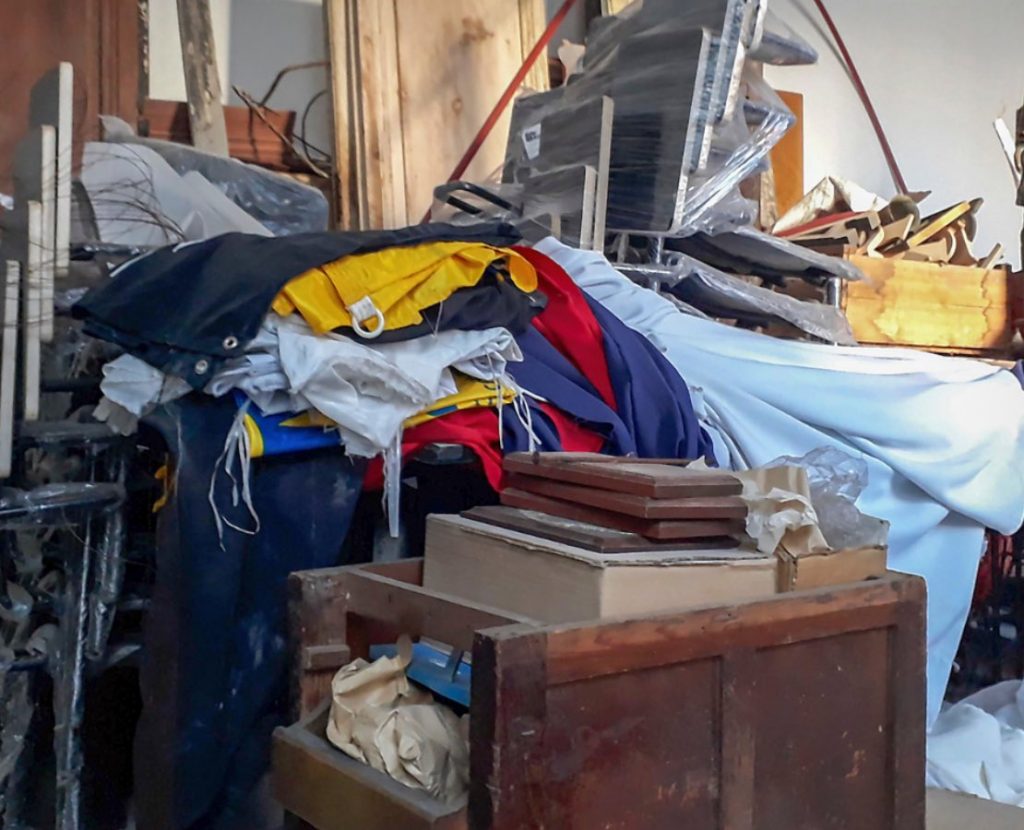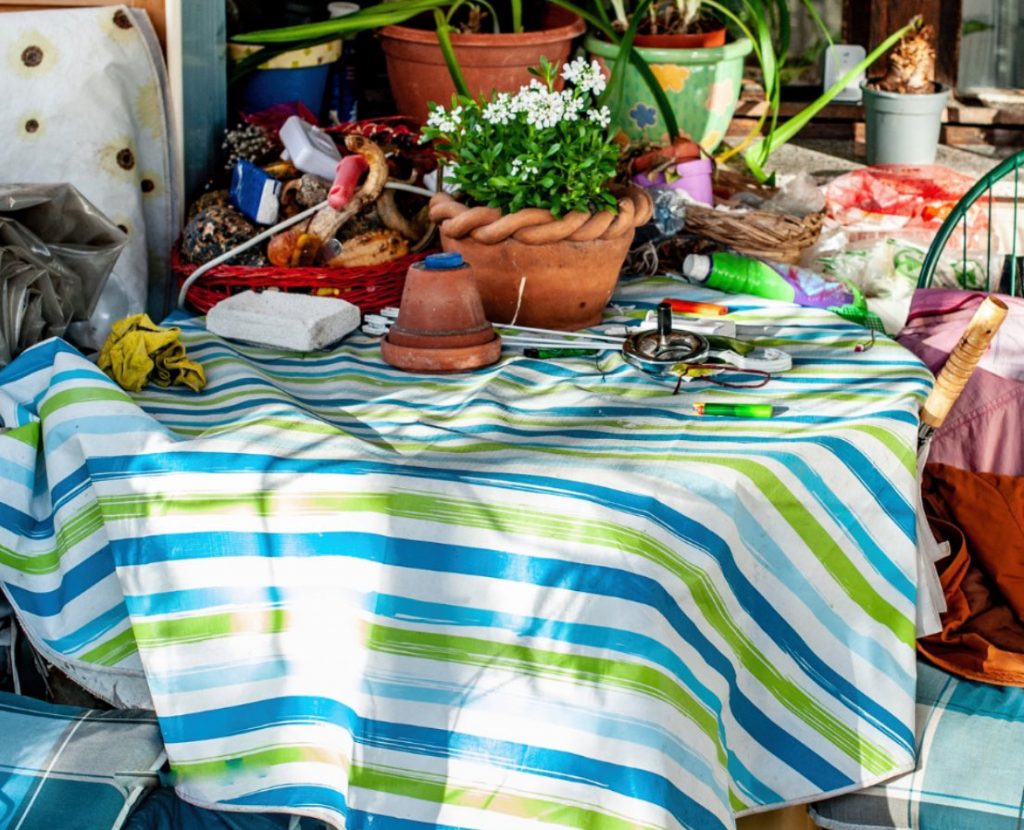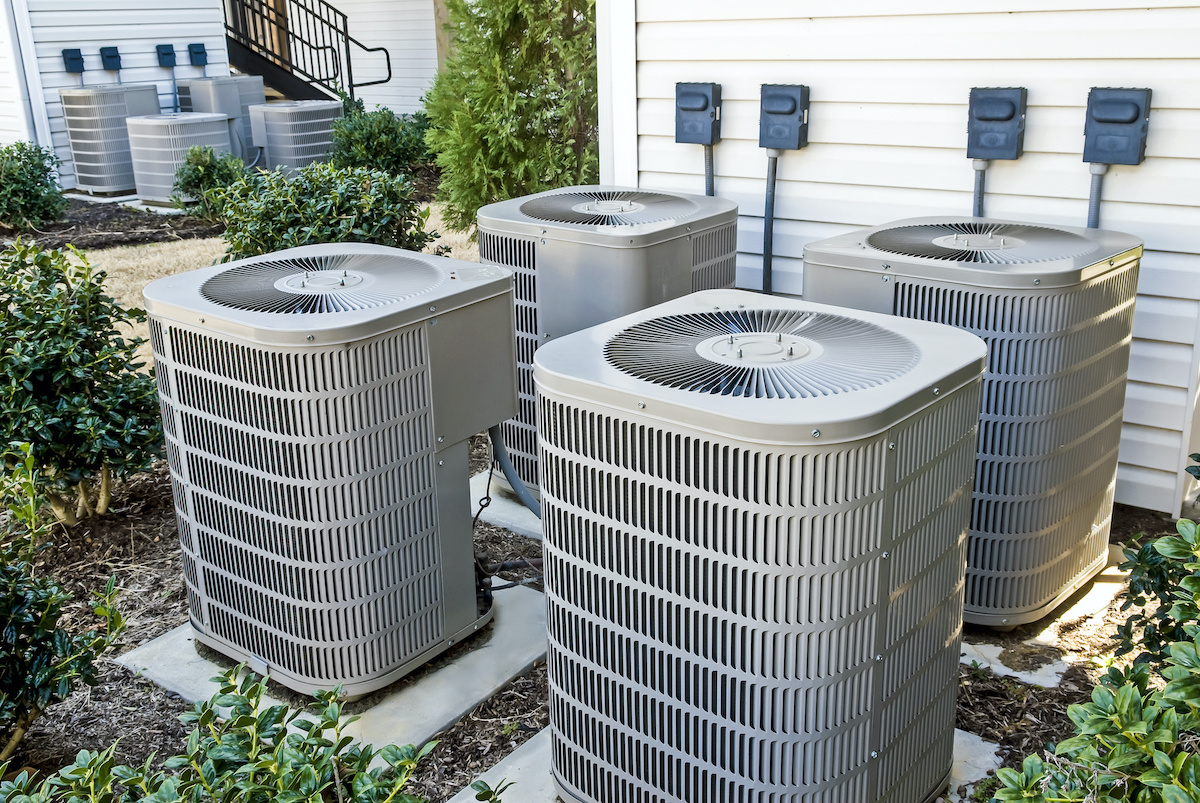Hoarding can be a challenging issue to tackle, both physically and emotionally.
Unlike ordinary clutter, hoarding involves an overwhelming accumulation of items that can severely impact the individual’s quality of life and living environment. This condition often requires a sensitive and strategic approach to address the physical mess and underlying psychological issues.
If you’re gearing up for a hoarding cleanup, it’s important to approach the task with care and consideration.
This article will provide practical tips to ensure a safe and effective cleanup process, enabling a transition to a healthier and more organized living space.
Understanding Hoarding and Its Challenges
Before diving into the cleanup process, it’s crucial to understand what hoarding is and why it occurs.
Hoarding is characterized by the excessive accumulation of items, often to the point where living spaces become unusable. This behavior can lead to dangerous living conditions, with clutter blocking pathways and posing fire hazards.
Hoarding can stem from factors including emotional attachments, fear of loss, or mental health conditions like anxiety and depression. Understanding these underlying causes is essential for anyone involved in the cleanup, as it informs a compassionate and tailored approach to the process.
Emotional and Physical Considerations
Cleaning up after hoarding is not just about removing items; it’s also about addressing the emotional needs of the person involved. The process can be overwhelming, and it’s essential to be sensitive and supportive.
Emotional distress is common, as individuals may feel a profound sense of loss or anxiety when parting with their possessions.
Physically, hoarding environments can pose health risks, such as mold, pests, or structural damage. These hazards necessitate proper precautions to ensure safety during the cleanup. Wearing protective gear, such as gloves and masks, is crucial to prevent exposure to allergens and contaminants.
Tip 1: Plan and Prepare Thoroughly
A successful hoarding cleanup starts with a well-thought-out plan.
Begin by assessing the situation and setting realistic goals. This initial evaluation should include identifying the most critical areas that need attention and understanding the scope of work required.
Decide which areas to tackle first and allocate enough time for each. Breaking the project into smaller, manageable parts can make the task seem less daunting and more achievable.
Assemble a Support Team
Gather a team of trusted individuals to assist with the cleanup. This could include family members, friends, or professionals experienced in hoarding cleanup. Having a team will make the process more manageable and provide emotional support.
Team members can offer different perspectives and skills, enhancing the efficiency and effectiveness of the cleanup. Moreover, the presence of supportive individuals can help alleviate the emotional burden on the person affected by hoarding.
Gather Necessary Supplies
Ensure you have the necessary supplies, such as gloves, masks, cleaning agents, and sturdy trash bags. Safety gear is especially important to protect against dust, mold, and other potential hazards.
Invest in high-quality cleaning products and tools to ensure thorough sanitation of the space. Consider specialized equipment like air purifiers to improve air quality during and after the cleanup. Having the right supplies on hand ensures the process can proceed smoothly and safely.
Tip 2: Start Small and Stay Focused

It’s easy to become overwhelmed by the sheer volume of items in a hoarding situation. To avoid burnout, start with small, manageable tasks. Focus on one area at a time, such as a single room or even a part of a room. This approach helps maintain momentum and prevents the discouragement that can arise from trying to tackle everything at once.
Prioritize Safety and Essential Items
Identify any immediate safety hazards and address them first. This could include clearing pathways, checking for fire hazards, or removing perishable items. It’s crucial to ensure the living environment is safe before proceeding with more extensive sorting and organizing.
Next, prioritize items that are essential for daily living, like clothing and toiletries. Ensuring access to these necessities can help the individual feel more secure and less anxious about the cleanup process.
Tip 3: Sort Items Methodically
Sorting is a crucial step in the hoarding cleanup process. Establish clear categories for items, such as keep, donate, sell, and discard. Be consistent and stick to these categories as you work through the clutter. This systematic approach helps prevent decision fatigue and ensures that progress is made steadily.
Use the “Four-Box Method”
The “Four-Box Method” is an effective technique for sorting. Label four boxes: Keep, Donate, Sell, and Trash.
As you go through each item, place it in the appropriate box. This method helps streamline decision-making and keeps the process organized. Revisiting these boxes periodically can help reinforce decisions and allow for any necessary adjustments as the cleanup progresses.
Tip 4: Be Mindful of Emotional Attachments
Hoarding often involves strong emotional attachments to items, making it difficult for individuals to part with their possessions. Approach the cleanup with empathy and understanding. Recognizing the sentimental value of objects can foster a more supportive environment during the cleanup process.
Communicate Openly and Compassionately
Engage in open conversations with the person affected by hoarding. Listen to their concerns and validate their feelings. Encourage them to share the stories behind their items and discuss the benefits of letting go. This dialogue can be therapeutic and help the individual come to terms with the changes occurring in their living space.
Set Small, Achievable Goals
Help the individual set small, achievable goals for letting go of items. This could involve making decisions about a specific category, like clothing or books. Celebrate each success to build momentum and confidence. Recognizing accomplishments, no matter how small, can motivate continued progress and foster a sense of achievement.
Tip 5: Seek Professional Help If Needed

In some cases, hoarding cleanup may require professional intervention. Don’t hesitate to seek assistance from specialists, such as therapists or professional organizers, who have experience dealing with hoarding situations. These professionals can offer expert guidance and support tailored to the individual’s needs.
Engage a Professional Cleaning Service
If the cleanup involves significant health risks or structural issues, consider hiring a professional cleaning service. These experts are equipped to handle hazardous materials and can ensure a thorough and safe cleanup. Their experience and specialized equipment can address complex situations that are beyond the capabilities of non-professionals.
Therapy and Counseling Support
Hoarding often has underlying psychological components. Encourage the individual to seek therapy or counseling to address these issues. Professional support can be instrumental in preventing future hoarding behavior. Therapists can provide coping strategies and emotional support that are essential for long-term recovery and maintenance of a clutter-free environment.
Conclusion
A hoarding cleanup is a complex and often emotional task. By approaching it with empathy, planning, and patience, you can help create a healthier living environment.
Remember to prioritize safety, support the individual’s emotional needs, and seek professional help when necessary. With these tips, you’ll be well-equipped to tackle the challenges of hoarding cleanup effectively.
The process is not just about clearing the clutter but fostering a supportive and understanding environment that promotes healing and growth.
In the end, the goal is not just to clear the clutter but to support the individual’s journey towards a more organized and fulfilling life. By addressing both the physical and emotional aspects of hoarding, you can help pave the way for sustainable change and improved well-being.
For expert and empathetic hoarding clean up services in Las Vegas, contact PuroClean of East Las Vegas today.




 PuroClean of East Las Vegas
PuroClean of East Las Vegas